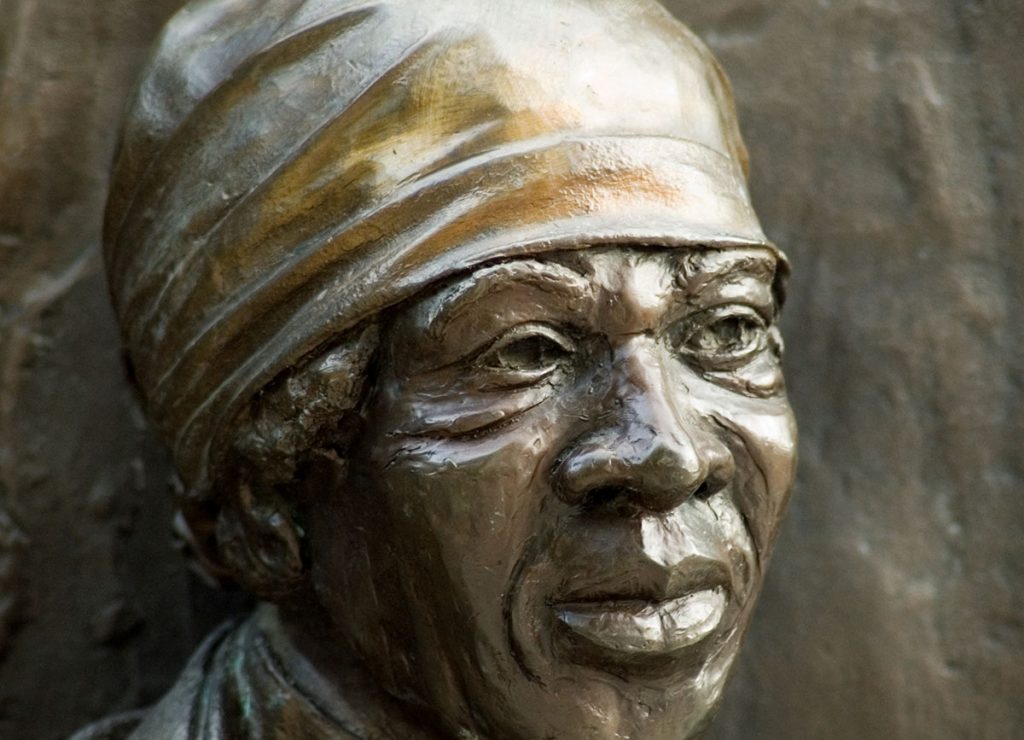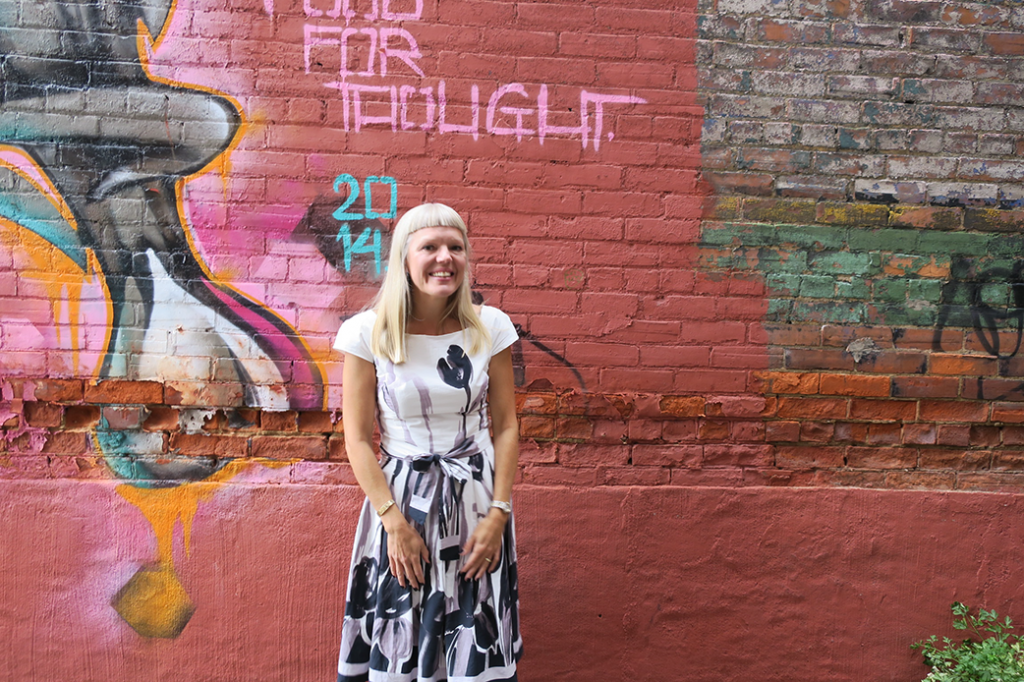
Ilene Sova is a Toronto artist, artrepreneur, Tedx Woman speaker and founder of The Feminist Art Conference (FAC). Sova started drawing at age three, and while pursuing her bachelor of fine arts at Ottawa University, developed a keen interest in women’s psychology and feminism. She later combined these three passions and made a commitment to use her painting skills to catalyse discussion of women’s social issues. Her “Missing Women Project” was showcased at the 2013 National Forum on Feminism in Ottawa.
LiisBeth will be moderating a panel on Gender, Entrepreneurship, and Innovation at the upcoming FAC at OCAD University on Saturday, Jan. 21 2017. Panelists include Jack Jackson (AllJackedUp), Renish Kamal (Fidget Toys), Emily Rose Antflick (Shecosystem), and more!
LiisBeth recently sat down with Sova to talk about art, politics and the FAC.
LiisBeth: Why did you found FAC?
Ilene Sova: I founded FAC out of a project that I was working on called the Missing Women Project. I had been painting Missing Women from Ontario for four years in an impassioned attempt to bring about a discussion around violence against women in our local communities. As I was going through each case and doing the research for the portraits it was very clear that each woman had suffered violence due to patriarchal systems of oppression. While I processed this, I had all that feminist rage building up like a pressure cooker. I realized that I really needed to talk about these issues with feminist artists who could give me feedback and context. I came to a realization that I really wanted a supportive community to connect to.
My second realization was that that community didn’t really exist in any organized form in Toronto. So, when I launched the show, I decided that I would organize FAC to bring other feminist artists together to talk about the issues in our work and to meet one another under one roof, make connections, network and create relationships. I made a call for submissions and took the big leap and put it on social media. It had 45 shares by the end of the day. And by the end of that week, I had 20 volunteer committee members come forward! I was getting emails from all over the world (Kenya, Colombia, the U.S.) I was shocked by the reaction! The first FAC was quite magical, and afterwards, everyone was asking, “When is the next one?” I hadn’t thought about doing it again, but when myself and the committee saw the response, we decided in that moment to commit to yearly events and programming to continue with this wonderful energy!
LiisBeth: How many years has FAC been running? What has the response been like?
IS: FAC started in 2012 and our first conference had 60 participating artists and 150 attendees. It sold out in 48 hours. In 2014, we had 120 participating artists and 350 attendees and the conference was fully registered in 54 days. Last year we had 140 participants and 560 people registered! It’s growing beyond my imagination and we now have the addition of the two-week FAC Residency with Artscape Gibraltar Point every spring!
LiisBeth: We just have to ask: since Trump’s win, what are your thoughts about the role of feminism in the coming four years?
IS: My initial feeling about U.S. election news was a strong sense of ambivalence. Does it really matter who won? As a young anti-globalization activist, getting tear gassed pepper sprayed and beaten by police (for speaking out against economic trade agreements) I learned quite early that, to quote Bell Hooks, the “white supremacist, patriarchal, capitalist system” will do what it will do. I also experienced how systems issues impact our everyday lives. In my view, the system today is on a fast track to eliminate the middle class, divide people, deregulate, reduce government, erase the social safety net and ultimately privatize services to make immense profits for billionaires. To do that successfully, it MUST create fear, marginalize, oppress, mass imprison, and destroy Indigenous rights. Donald Trump is simply part of a mechanism. And so was Hillary Clinton for that matter—which is why she didn’t win.
As someone who disagrees with how the system works today, and as a feminist activist, I wake up each day asking myself what will I actually do to change it? My answer? I decided to make the kind of art that fuels social change, and focus on helping to build and support my community. I research issues I’m passionate about; and take considered actions to create positive change in people’s everyday lives. It’s the reason I work tirelessly on initiatives like the Feminist Art Conference, getting art education back into our schools with the Blank Canvases project, working hard to provide affordable art spaces at Walnut Studios. These are my points of resistance; this is how I fight back. All the wonderful feminist community organizers in Toronto know it’s time now more than ever to focus on the work in our local areas. As a feminist, if you are feeling demoralized and helpless, give some thought to how you can RESIST in your own, unique way. Help build an active, positive community in spite of the election of a regressive regime in the U.S.. Stand up. Fight back.
LiisBeth: That sounds like a terrific New’s Year’s resolution item! Thank you, Ilene!
__________________________________________________________________________________________________________________________________
Some Additional FAC Facts
- In 2013, FAC received over 70 submissions from all over North America, including Colombia and Kenya.
- FAC 2015 expanded to one week of activities including three satellite exhibitions (one at The University of Toronto, one at York University and one at Artscape Youngplace). Participants came from as far away as Norway, South Korea, Australia, Hong Kong, Turkey and the U.S.
What to Expect at FAC 2017(running Jan. 10-21)
Another incredible lineup of speakers, artists and panels, including:
- Liisbeth – Gender, Entrepreneurship, and Innovation (Jan 21)
- Queering Feminist Art Class Panel Presented by Feminist Art Gallery / York University
- Centre for Pluralism in the Arts Ontario – Women of Colour and Equity: Double Trouble
- Black Futures Now – Organise This!: The Ethics, Politics, and Joys of Organising a Black Conference
- Closing Keynote Presented by Native Women in the Arts: Sadie Buck Interviewed by Erika Iserhoff
- Maker’s market!
For more information and the detailed schedule, go to https://factoronto.org/fac2017/.
To register, go to https://www.eventbrite.ca/e/feminist-art-conference-2017-embodied-resistance-tickets-29284113572.












